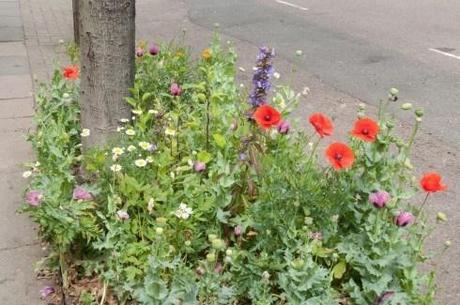
About 5 years ago, our community veg growing project was launched when Islington council gave away free wildflower seeds for tree pits (the base around trees). Since then, pimping our pavements has become a regular part of our horticultural activities, and an edged tree pit has become the holy grail of our street planting.
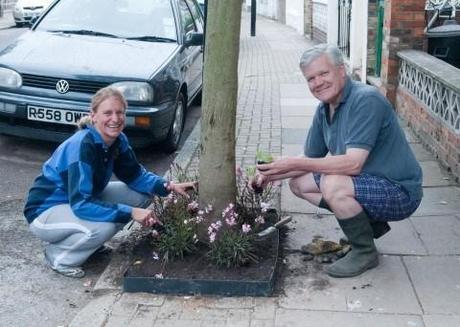
When the council included our community project as part of their entry into London and Britain in Bloom, they kindly helped us along with edging fifteen of our pits.
Just those few extra inches makes all the difference,
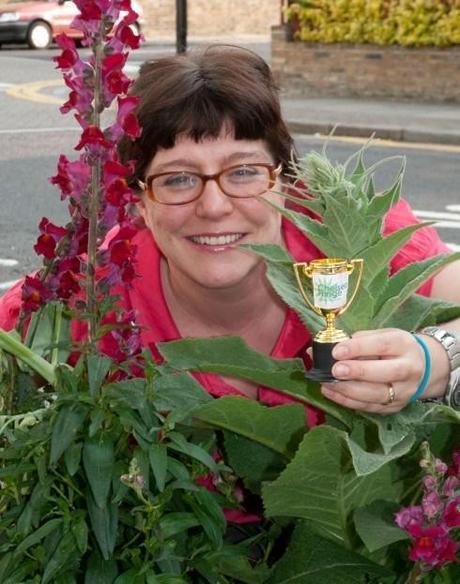
allowing residents to plant perennials alongside wildflowers and other annuals.

Sadly, these resources are no longer available from the council, but we do have enough funding to have a go at DIY tree pit edging. And here’s Nikki, our first DIY tree pit candidate. The metal EverEdge edging comes in packs of five 1 meter lengths, that easily interlock to create a continuous border. We were slightly alarmed at how rigid it seemed at first, but bending was more do-able than we at first thought, simply wrapping the metal around a piece of wood (instructions are enclosed!) and using a bit of elbow grease.
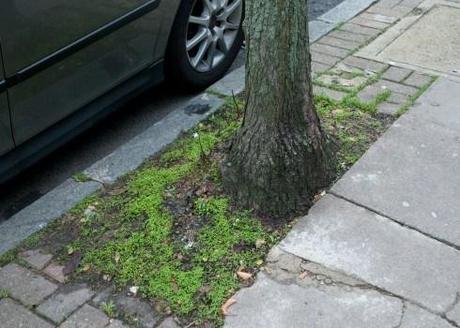
Since it was our first attempt, we did learn a few lessons along the way.
- Ask your neighbours to move their cars the day before, for easier access to the tree pit!
- Don’t permanently join your lengths of EverEdge together until you have created all the bends on all of the pieces
- You’ll need more soil to fill the tree pit (once it’s been created) than you think
- You’ll need a large mallet for hammering in the edging, plus some wood for shaping the corners and to use with the mallet (see pic below)
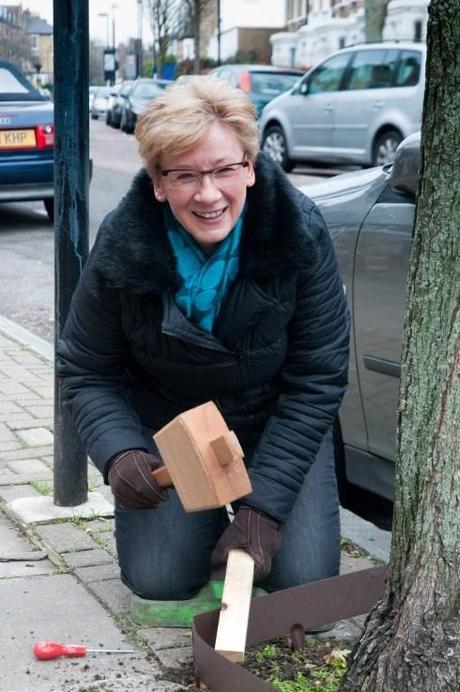
Once you’ve created your bends and positioned your edging for the whole tree pit, you can then use the mallet to finally sink the spikes into the soil.
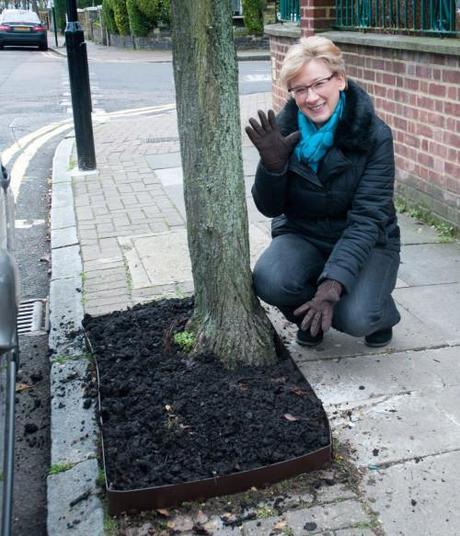
Et voila! Once filled with recycled green waste, we have a new tree pit ready for planting. A tad wobbly, but we’re jolly pleased with our first attempt. Now we know that it is possible to create DIY edged tree pits, we’ll buy more edging for other neighbours to do the same.
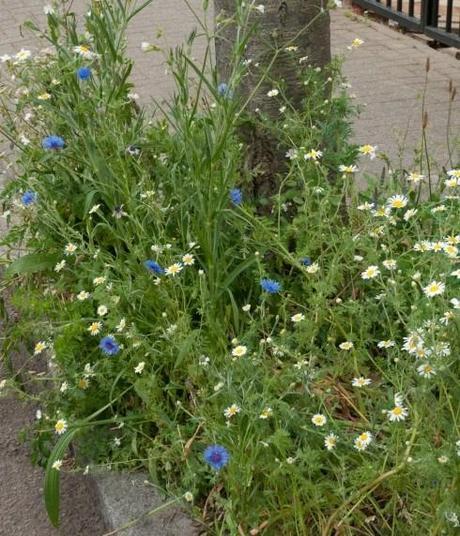
The world is now our oyster, be it planting wildflowers,
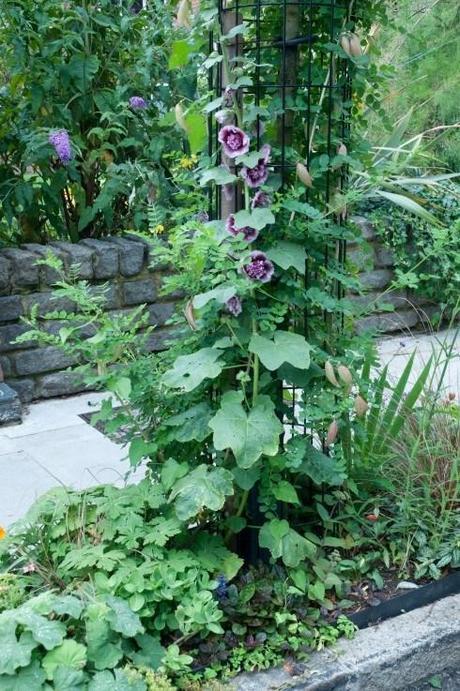
or perennials.
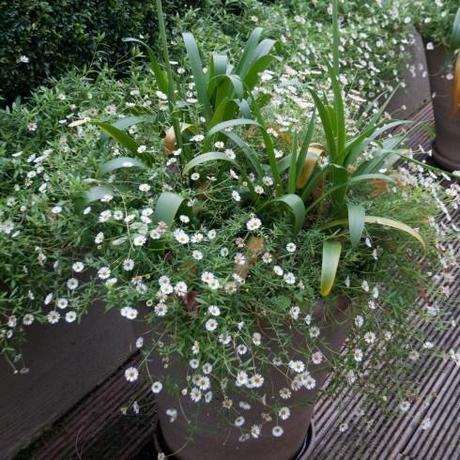
I really like the idea of planting some Erigeron karvinskianus in my tree pit this year, giving daisies from June until November and returning to do the same the following year, with perhaps a Hollyhock (as above) for a bit of height too.

Or possibly planting some Allium bulbs in September for a version of this magnificent tree pit, spied at Hampton Court Flower Show one year.
These tiny growing spaces are great for brightening-up the whole neighbourhood and can also afford gardeners the opportunity to hone their planting skills (in these sometimes most challenging of situations), to create the perfect miniature garden.
